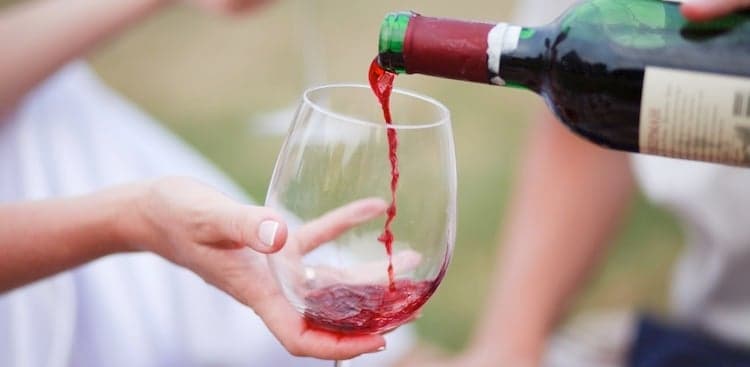So, I know I told you not to worry too much about the lingo as a novice wino. And it’s still advice I stand behind—it’s more important to develop your ability to pick up flavors than it is to know how to describe them correctly.
That being said, there are a few basics that are important to understand, especially when you’re asking someone to recommend the best pour for you. So, read on for a little vocab lesson. And if you want to do so over a glass of Pinot, no judgment here (um, unless you’re still at work).
Tannin
Tannin is probably the best example of a wine term that is used very frequently but that relatively few people really understand. People often talk about tannin as if it’s a flavor, but it’s actually a tactile sensation in your mouth, sort of a drying feeling.
This makes sense, as tannin is an astringent compound that suppresses salivation. Tannins will most often be detected in red wines because the compound comes from grape skins, which are not used in white wine processing.
The coolest way I’ve heard of to really understand the basic feeling of tannins—besides just drinking a lot of wine—came from the book Secrets of the Sommeliers by Rajat Parr and Jordan MacKay. They suggest doing a nifty little experiment using the tannic properties of tea to help you understand different levels of tannin. Get several bags of a basic green or black tea, then brew four cups, allowing one to brew for 30 seconds, one to brew for a minute, one for three minutes, and the last for five minutes. The teas that have brewed longer will have more of this astringent feeling, making it easy for you to compare what high versus low levels of tannin feel like in the mouth.
Dryness
Okay, so tannins can make the mouth feel dry, so is that what people mean when they talk about a wine being dry? I, too, have always been confused by this description—considering that wine is, well, liquid.
But in the wine world, dry is used to describe the opposite of sweet. So describing a wine as dry means you can detect no sweetness in the flavor. With the exception of dessert wines, the majority of wines are either dry or off-dry (meaning there’s a little sweetness to them).
Body
Understanding the body of a wine is a tough one, especially since the term is commonly misused to describe a wine that is robust in flavor or color. But, like tannin, body really has nothing to do with the flavor of the wine, but rather with the mouthfeel (that’s foodie speak for the feeling of it in your mouth).
A full-bodied wine will feel thicker and more viscous in the mouth, while a light-bodied wine will feel more watery. While a wine’s body is most often determined by its alcohol content (higher alcohol causing fuller body), the amount of sugar in the wine and parts of the winemaking process can also affect it.
An easy way to understand this is to think of the difference between skim and whole milk. While there’s no real difference in the smell or flavor, whole milk will feel heavier and almost coat your mouth. Besides how it feels when you drink it, you can judge the body of a wine by how it acts when you swirl it around your glass—full-bodied, more viscous wines will take longer to drip down the side and form more distinct “tears,” while light-bodied wines will quickly fall down the glass in a sheet.
Finish
In layman’s terms, the finish of a wine means the aftertaste. The most important measure of a wine’s finish is time—how long does the taste of the wine linger after you’ve swallowed the sip? The longer the good taste and tactile qualities of a wine stick around in the mouth, the higher quality a wine generally is. A good wine can have a finish anywhere from a minute long to several minutes for the best bottles. Wine that isn’t high quality will either have little to no finish (the flavor just drops off as soon as you swallow), or the lingering tastes will be unpleasant ones.
While this is by no means an all-inclusive list of wine vocab, a good understanding of these four basic terms will help you understand what your waiter is saying when you ask him to describe that glass of Cab Sav. And hey, they aren’t too bad to throw into a conversation at dinner when you want to impress your friends, either.

